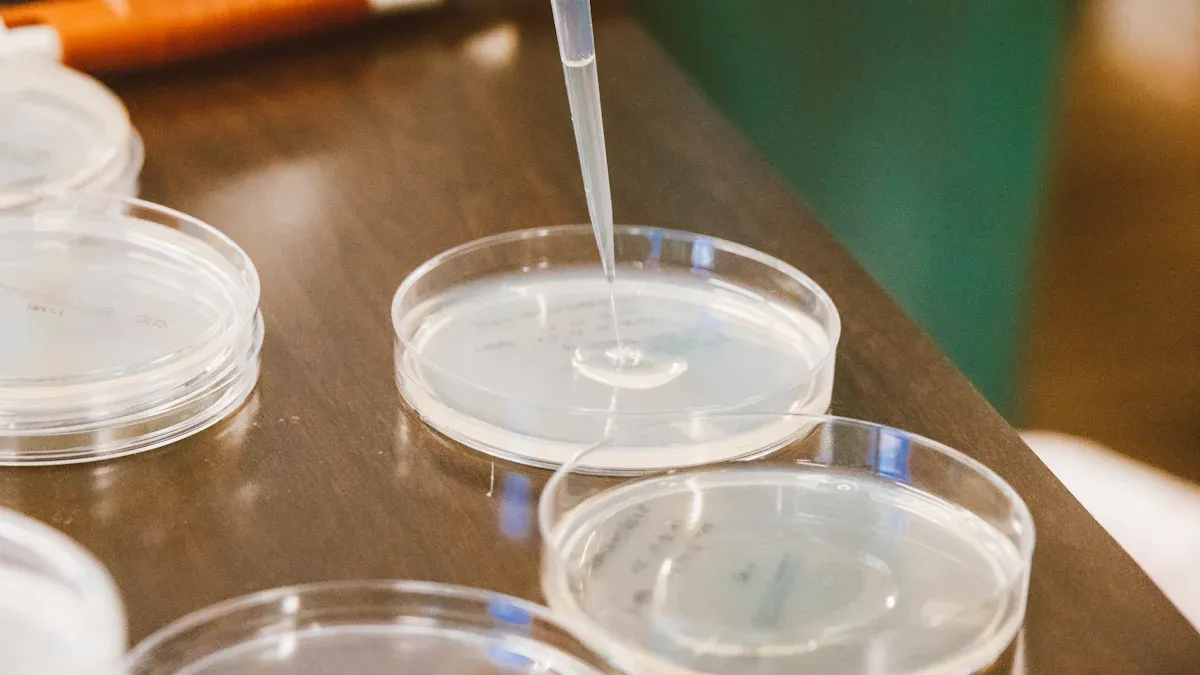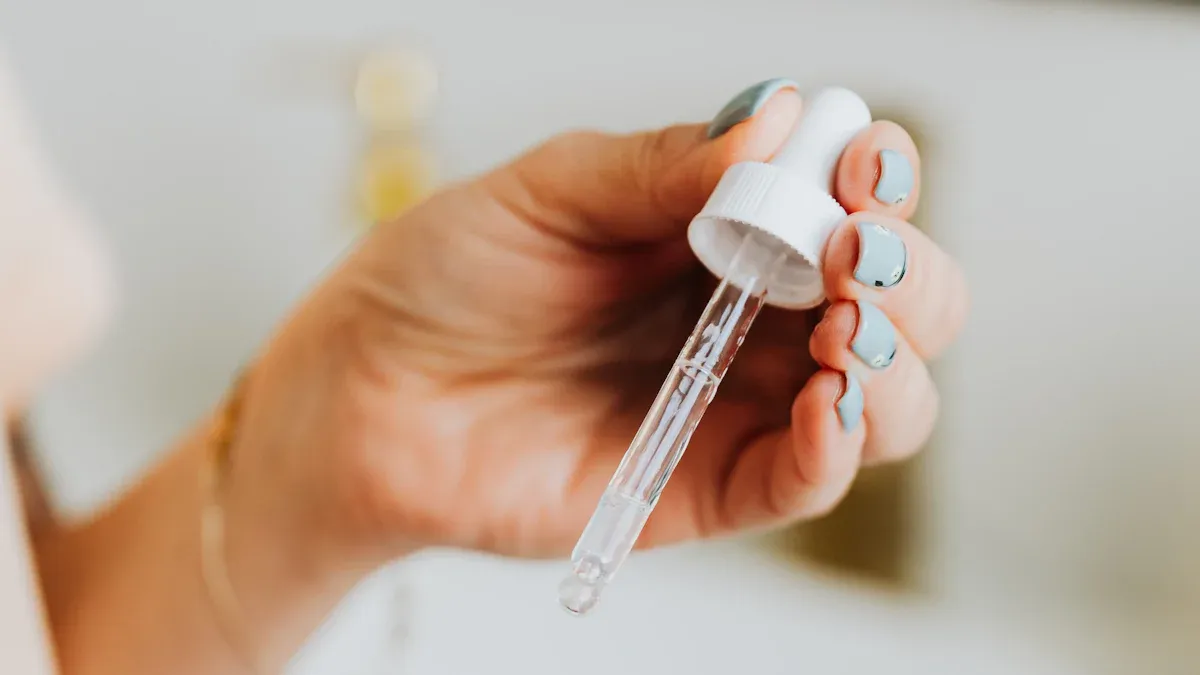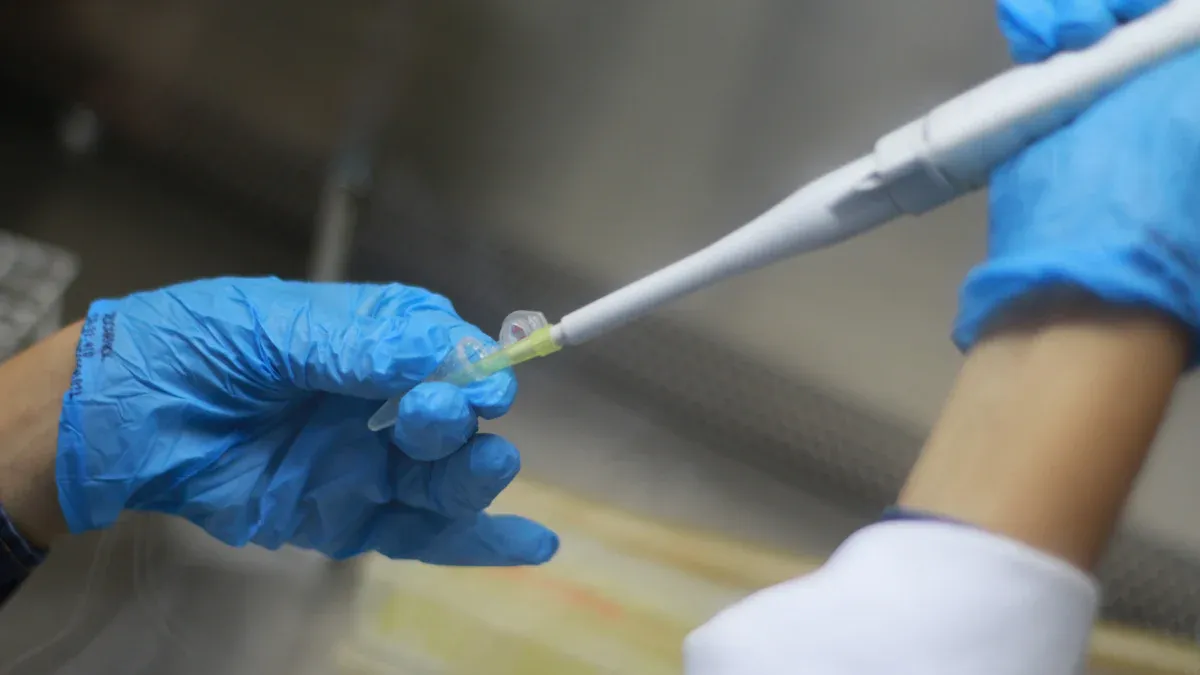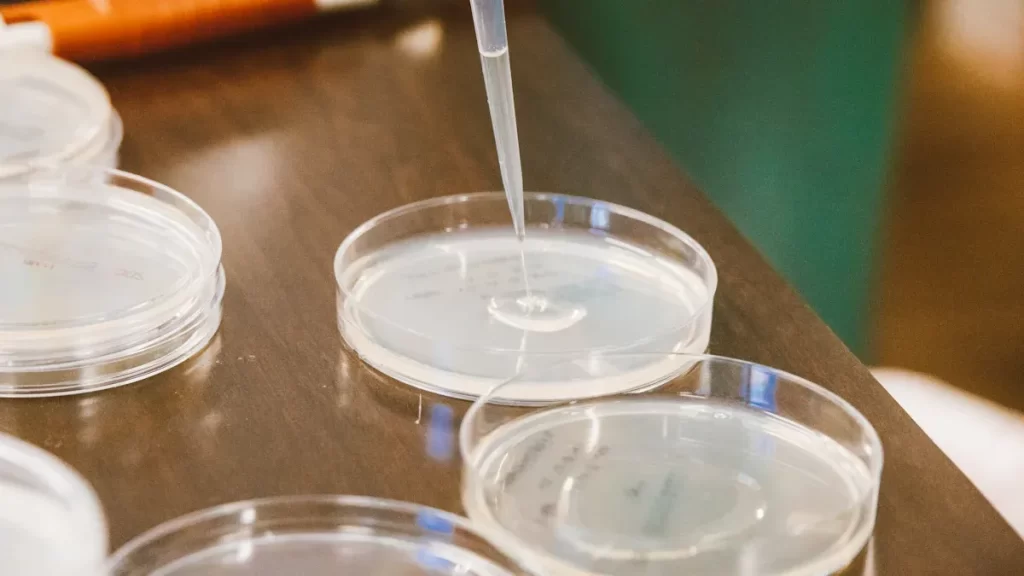News & Events
Pasteur Pipette Applications in Immunoprecipitation: Best Practices for 2025

You use a pasteur pipette in immunoprecipitation when you need to handle samples gently, especially during washing and elution steps. This tool helps you transfer solutions without disturbing beads or losing proteins. Try cutting the pipette tip at a 45° angle to move viscous liquids or bead slurries smoothly. Updated best practices for 2025 recommend this method to keep your samples safe.
| Pasteur Pipette Application | Impact on Sample Integrity |
|---|---|
| Add sucrose under viral supernatant | Maintains viral integrity |
| Layer solutions gently | Preserves sample quality |
Key Takeaways
- Use a Pasteur pipette to handle samples gently during immunoprecipitation. This prevents damage to proteins and beads.
- Cut the pipette tip at a 45° angle for better movement of viscous liquids and bead slurries. This technique enhances sample transfer.
- Always check the pipette tip for cleanliness before use. A clean tip avoids protein loss and ensures consistent results.
- Employ gentle suction and slow pipetting to maintain protein-protein interactions. This approach improves the quality of your results.
- Regularly review and optimize your pipetting techniques. This practice helps maintain high standards in your immunoprecipitation protocols.
Pasteur Pipette Use in Immunoprecipitation

When to Use Pasteur Pipettes
You use a pasteur pipette during several steps in an ip protocol. You need this tool when you want to transfer solutions without disturbing agarose beads or magnetic beads. You often use it to aspirate supernatants after antibody binding or to wash beads gently. You also rely on a pasteur pipette when you handle radioactive medium in immunoprecipitation. This step is important for experiments with labeled cells because you must avoid contamination and keep your results accurate.
You use a pasteur pipette in co-ip protocols when you need to separate proteins that interact with each other. You need to move bead slurries or viscous solutions, and cutting the tip at a 45° angle helps you do this smoothly. You also use it when you add or remove buffers during washing and elution. You protect proteins from damage by using gentle suction and slow pipetting.
Tip: Always check the tip of your pasteur pipette before you start. A clean, angled tip helps you avoid losing proteins and keeps your ip protocol consistent.
Why Pasteur Pipettes Are Preferred
You choose a pasteur pipette for ip because it gives you control over sample handling. You avoid harsh suction that can break beads or damage proteins. You also prevent sample loss by using a wide orifice, which is helpful for viscous solutions and bead slurries. You keep antibody-protein complexes intact by moving liquids slowly and gently.
Pasteur pipettes help you maintain protein-protein interactions during co-ip. You need to keep proteins bound to antibodies, so you avoid fast pipetting or narrow tips. You also use pasteur pipettes to layer solutions in your protocol, which helps you separate proteins without mixing layers. You get better results in immunoprecipitation when you use this tool for washing, elution, and buffer exchange.
| Step in IP Protocol | Why Use Pasteur Pipette? |
|---|---|
| Aspirating supernatant | Prevents bead disruption |
| Washing beads | Maintains protein integrity |
| Eluting proteins | Reduces sample loss |
| Handling radioactive medium | Ensures safety and accuracy |
| Co-IP buffer exchange | Preserves protein-protein interactions |
You improve your ip results by using a pasteur pipette at every critical step. You keep proteins safe, protect antibody complexes, and avoid contamination. You also make your immunoprecipitation protocol more reliable and reproducible.
Protocol Steps for Pasteur Pipette in IP

Sample Preparation
You start your immunoprecipitation protocol with careful sample preparation. You select the right buffer and adjust the pH to protect proteins. You choose a target-specific antibody for your experiment. You mix your sample with beads that match your bead selection for immunoprecipitation. You use a pasteur pipette to transfer your sample gently into the tube. You avoid bubbles and splashing to keep protein complexes intact.
You cut the end of the pasteur pipette at a 45° angle when you work with viscous solutions or bead slurries. This technique helps you move your sample smoothly. You use wide orifice tips for thick samples. You check the tip for cracks or debris before you start. You add your antibody and begin antibody incubation. You keep your sample cold to prevent protein breakdown. You follow quality control and reproducibility guidelines to make sure your sample preparation is consistent.
Tip: Always label your tubes clearly during sample preparation. This step helps you track each sample and avoid mix-ups during the protocol.
Washing and Elution
You move to the washing and elution steps after incubation. You use a pasteur pipette to aspirate the supernatant without disturbing the beads. You leave a small amount of buffer behind to protect the beads and proteins. You wash the beads several times to remove unbound proteins and antibodies. You use gentle suction and slow pipetting to avoid damaging agarose beads.
You prepare your elution buffer and add it with a pasteur pipette. You mix the beads gently to release the protein complexes. You avoid harsh mixing to keep protein-protein interactions stable. You collect the eluted proteins for further analysis. You use spectrometry to check the purity and concentration of your proteins. You follow validation and controls to confirm the success of your immunoprecipitation step.
- You remove buffer leaving about 50 µl behind, spin again, and use a 100 µl pipette tip to take out as much buffer as possible.
- You remove resin from the column with a pasteur pipette into a vial, then centrifuge and mix with dissolved peptide for overnight incubation.
| Step | Action | Purpose |
|---|---|---|
| Aspirate supernatant | Use pasteur pipette | Protect beads and proteins |
| Wash beads | Gentle pipetting | Remove unbound proteins |
| Elute proteins | Add buffer with pasteur pipette | Release protein complexes |
Co-Immunoprecipitation Considerations
You use co-ip protocols to study protein-protein interactions. You select the right antibody and beads for your experiment. You prepare your sample with care to keep proteins in their natural state. You use a pasteur pipette to transfer bead slurries and viscous solutions. You cut the tip at a 45° angle for smooth movement.
You handle the beads gently during washing and elution. You avoid fast pipetting to keep protein complexes together. You use wide orifice tips for thick samples. You optimize each step to improve reproducibility and validation. You check your results with spectrometry and other methods. You include controls to confirm the specificity of your antibody and the success of your co-ip protocol.
Note: You improve your immunoprecipitation experimental design by reviewing each protocol step and making adjustments for optimization. You keep your samples safe and your results reliable.
Troubleshooting and Optimization
Preventing Bead Disruption
You want to keep your beads safe during ip and co-ip. Bead disruption can lower your protein yield and affect your results. You can use several techniques to protect your beads:
- Lower the agitation rate to 400 rpm during incubation. This helps keep protein complexes together.
- Use a large-bore pipette, like a 25 mL pipette, when you aspirate. This reduces the chance of breaking beads.
- For small volumes, cut the pipette tip. This lets you move bead slurries without scraping the beads.
- Try gravity filtration instead of pressure-driven filtration. This gentle method helps you keep proteins and beads intact.
Tip: Always check your pipette tip before each step. A smooth, wide tip helps you avoid bead damage during washing and elution.
Avoiding Sample Loss
Sample loss can happen during the washing step in ip and co-ip. You want to keep as much protein as possible for spectrometry and analysis. Here are ways to reduce loss:
- Use proper suction and delivery techniques. Move the pipette slowly to keep protein complexes safe.
- Calibrate your pipettes often. This gives you better control over volume during elution and incubation.
- Place the pipette tip in the center of the tube. Avoid touching the sides to keep all proteins in the sample.
- Remove supernatant right after centrifugation. This helps you avoid losing proteins that stick to detergents.
Note: Pre-block beads with BSA before incubation. This step reduces non-specific binding and keeps more proteins in your eluate.
Ensuring Consistency
You want your ip and co-ip results to be reliable every time. Consistency helps you compare protein-protein interactions and improve reproducibility. Follow these steps for better optimization:
- Calibrate your pipettes on a regular schedule.
- Check pipettes for leaks or cracks before each use.
- Train everyone in your lab on proper pipetting and antibody selection.
- Use the right lysis buffer and antibody for your protein target.
- Choose polyclonal antibodies for better retention of proteins during incubation.
- Preclear lysates if you see too much non-specific binding.
- Add fresh protease inhibitors to protect proteins during incubation and elution.
- Wash beads thoroughly to remove unbound proteins and improve spectrometry results.
Callout: Optimization in every step, from incubation to elution, helps you get the best protein yield and keeps your immunoprecipitation workflow strong.
You can improve your immunoprecipitation results by using Pasteur pipettes with care. Always cut the tip for viscous samples and use gentle suction to protect your beads. Review your lab techniques each year to keep your protocols up to date.
Tip: Careful handling and regular practice reviews help you keep your samples safe and your results reliable.
FAQ
How do you cut a Pasteur pipette for viscous samples?
You use a sharp blade or scissors to cut the tip at a 45° angle. This wider opening helps you move thick solutions or bead slurries without clogging. Always check for a smooth edge before using the pipette.
Can you reuse Pasteur pipettes in immunoprecipitation?
You should not reuse Pasteur pipettes. Single-use pipettes prevent cross-contamination and keep your samples pure. Always use a new, clean pipette for each step in your protocol.
What is the best way to avoid bead loss during washing?
Tip: Hold the tube at an angle and use gentle suction with your Pasteur pipette. Leave a small amount of buffer over the beads. This method protects the beads and keeps your protein yield high.
Why do you need to use gentle suction with Pasteur pipettes?
Gentle suction prevents bead breakage and keeps protein complexes intact. Fast or harsh pipetting can damage beads and lower your sample quality. Slow, careful handling gives you better results.
When should you use wide orifice tips instead of standard Pasteur pipettes?
You use wide orifice tips when working with viscous solutions or large bead slurries. These tips help you transfer thick samples smoothly. Standard tips may clog or disrupt your sample.

